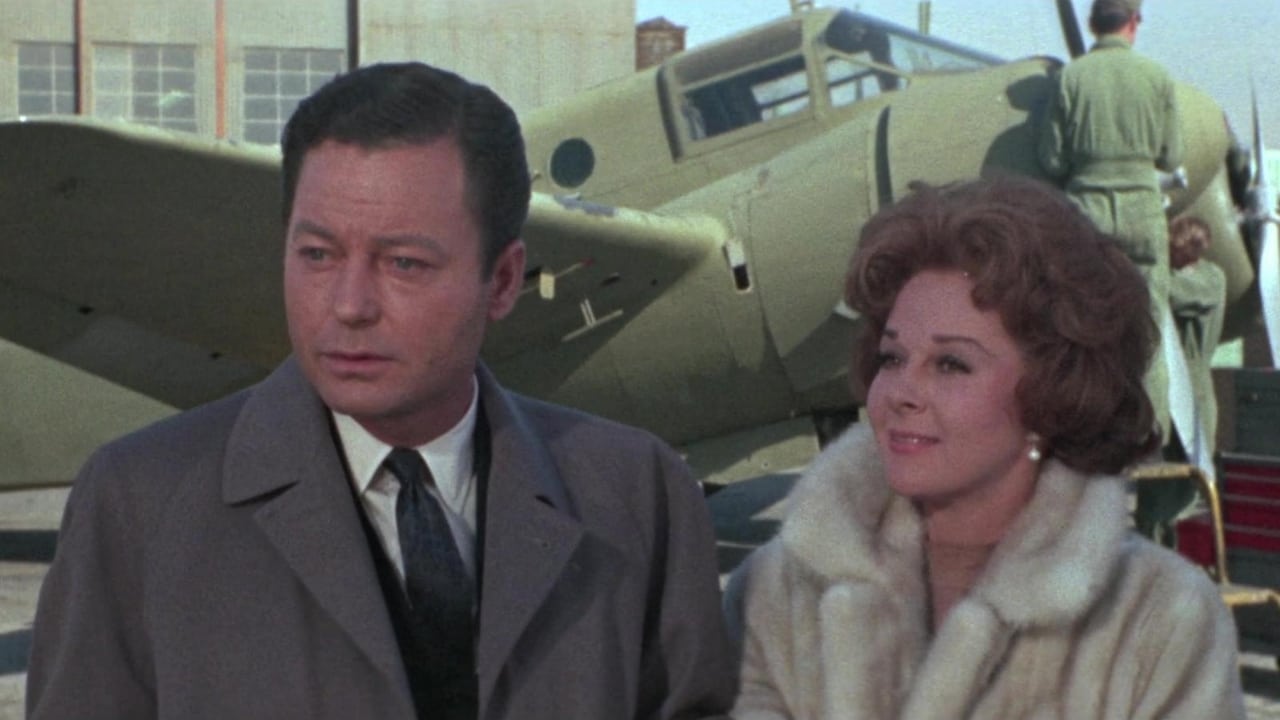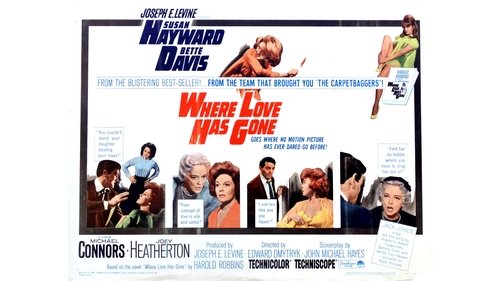


If you can't draw the parallels between this film and the 2 I mention then you need to do some research and see this film (from a book) is ripped right from the the news of the day with a pinch of an old Hollywood classic thrown in.An aspiring artist from a well to do family is always being told what to do by her domineering mother. She loves men and and isn't ashamed of showing it. One day she meets a war hero at her gallery opening and takes a liking to him. He meets the mother and she likes him but his impression of her quickly changes as she shows her true colors. Instead of the big wedding the mother wants, they both sneak off and get married. The next day he's off to the war for a year. She has a baby and from this he has to work somehow. He's idealistic and wants no help from the mother but she intervenes without him knowing so he'll work for her...something he doesn't want. Years of this life of alcohol and getting whatever you want has wore him down and his wife feels the same. She goes back to her sex with other men ways and he's had it. The daughter they have is impressionable and it affects her greatly. Segway to the crux of the film...the daughter murders her mothers boyfriend. Of course there's more to it than that. Turns out this 15 year old was sleeping with her mother boyfriend all along.This film was a soap opera all the way though. It wasn't badly made but it should or could have just been a TV movie. The content is shocking to me for it's day. A 15 year old girl kills her mother's boyfriend who she was sleeping with also. Sound Familiar? A mix of Mildred Pierce and Lana Turner's real life.With the exception of the redone story, my main issue is Mike Conners. He was made for TV, and in this, it shows. He's just not movie material to me. It's obvious why he was more successful in TV and not in film. Bette Davis plays a character she's done before. A mother figure or leading lady figure who dominates everyone in the house. Susan Hayward does a grand job but it was all for naught in this rehash from the past.Not a bad film folks, it's just that I've seen it before in other incarnations. Watch it to see how similar it looks and feels to a modern day Soap Opera.
... View MoreOn April 4, 1958, Lana Turner's daughter, Cheryl Crane, stabbed Turner's boyfriend, underworld figure Johnny Stompanato, to death, in what was later deemed a justifiable homicide. This scandalous incident served as the inspiration for Harold Robbins' 1962 novel "Where Love Has Gone," his follow-up to "The Carpetbaggers." And this tawdry novel was given the A-list treatment by Paramount two years later, in a film that was critically lambasted but commercially successful. The picture featured the cream of Hollywood talent both in front of and behind the camera, but turned out to be a highly melodramatic affair, replete with florid dialogue and soap operalike qualities. But is it fun to watch today, almost five decades later? Oh, yes, indeed!The film cleaves into two fairly discrete sections. In the first, we meet Luke Miller, an aspiring architect (played by Mike Connors) whose daughter, Danni, has just killed his ex-wife's lover in San Francisco. (Fifteen-year-old Danni, it should be mentioned, is played by future sex symbol Joey Heatherton, 20 here and almost unrecognizable as a redhead.) In flashback, we see how Luke first met Danni's mom, a sculptress and artist named Valerie Hayden (Susan Hayward), daughter of society matron Mrs. Gerald Hayden (Bette Davis, despite the fact that Bette was only 10 years older than Susan), and how their marriage soon dissolved due to alcoholism and infidelity. In the film's second half, we are witness to Danni's juvenile hearing and see the aftermath of the murder, including a short sojourn in blackmailing territory."Where Love Has Gone" features some beautiful sets and makes excellent use of its S.F. locales. It also features a catchy Sammy Cahn/James van Heusen theme song, warbled by Jack Jones, and eye-catching costumes by famed designer Edith Head. Edward Dmytryk's direction (he had previously worked with Susan on 1955's "Soldier of Fortune," though never before with Bette, and had just directed the film adaptation of "The Carpetbaggers") is typically expert, and the supporting cast (including DeForest Kelley as a cynical art critic, here two years pre-"Trek"; the always hissable George Macready; Jane Greer, who had appeared with Susan in 1947's "They Won't Believe Me"; and Whit Bissell, who seems to have appeared in half the films ever made!) is just fine. But of course, the main selling point of this film has to be the first and only pairing of two of Hollywood's greatest actresses, Bette Davis and Susan Hayward (two of MY personal favorites, at least). These two supposedly didn't get along well on the set (surprise, surprise), but sure do have a cutting and nasty chemistry on screen! Susan's final courtroom speech may be the film's finest moment, thespianwise, although Mike Connors, here three years prior to beginning his eight-year run as TV's Mannix, provides the film with its most ingratiating performance. In short, "Where Love Has Gone" is certainly nobody's idea of a great film, much less "high art," but yes, it sure is fun to watch. And really, where else are you going to see the "Brooklyn Bombshell," Susan Hayward, handle a blowtorch?
... View MoreParamount Pictures assigned star Producer Joseph E Levine to bring the torrid best seller roman a clef of the Lana Turner Johnny Stompanato murder to the screen. Levine cast surefire box office queen Susan Hayward to play "Lana, and to play the other strong female role, the one and only Ms. Bette Davis. There was a long time interest to see these two great stars in a film. Directed by Edward Dymtryk the film is a powerhouse with great acting by Susan Hayward and Bette Davis. I wish they had cast another actor other than Mike Connors in the role of Hayward's lover and Ann Margret rather than Joey Heatheron. Ms. Hayward got top billing over Ms. Davis--the first time in her great career Bette Davis was billed under another great female star!-- and wore great stylish outfits by Edith Head. It is now well known that Bette Davis and Susan Hayward did not get along at all during filming. Susan Hayward was afraid of Bette's well known use of tricks and since Susan Hayward had both cast approval and script approval and top billing, had Bette Davis boxed in. No changes were allowed. In fairness, the script did need more juice and a tougher script would have benefited the talents of Susan Hayward nd Bette Davis. Bette Davis carped about Susan Hayward until her death, and Susan Hayward joined Joan Crawford, Miriam Hopkins on Bette's "hate list". (Soon to be joined by Faye Dunaway and Lillian Gish. Where Love Has Gone with top notch Paramount production values is an old fashioned film and is best seen to see two great movie stars Susan Hayward and Bette Davis!
... View MoreI'm going to side-step the whole Lana Turner murder plot and just address the big flaming hole in this film.About ten minutes into the film, we flashback about twenty years to approximately 1944, where we remain for at least an hour. No one changes. Not one bit. Everyone looks exactly the same, even wearing the same 1964 costumes and hairstyles. Someone was thoughtful enough to give Luke a 1940s automobile, which he drives down a street full of 1960's cars! (In 1944, there shouldn't be a Corvair parked across the street). Besides the hair and clothes, all the homes are decorated in the same 1964 decor they had prior to the flashback (oh, those AWFUL grays that just ruin Hayward's "studio"...!) It doesn't really matter what redeeming qualities the film might have outside of this, and I didn't really see much, you can't just insult the hell out of your audience with a lousy flashback that is only twenty years earlier because the characters say it is, and expect them to respect the rest of the film. This is really, really bad; the so-called flashback is the worst art and set direction I have ever seen.
... View More